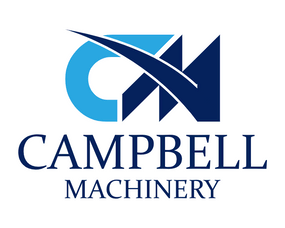22/05/2023 0 Comments
What is metal spraying?
For decades, we have been offering our clients the means to complete the very highest standard of metal spraying.
This industrial cleaning process is used in a variety of industries. However, despite its ubiquity, our clients still have questions about metal spraying. To make this information much more accessible, we have gathered the most frequently asked questions and included them in this article.
What is metal spraying process?
Metal spraying, also known as thermal spraying or metallizing, is a surface coating process used to apply a protective or functional layer of metal onto a substrate. It involves heating and propelling small particles of metal onto the object's surface to create a coating. The process is commonly used in various industries, including aerospace, automotive, marine, and manufacturing.
Here is a general overview of the metal spraying process:
Preparation: The surface to be coated is thoroughly cleaned and prepared to ensure proper adhesion of the sprayed metal. It may involve removing rust, oxides, and other contaminants through sandblasting or chemical cleaning methods.
Selection of Metal and Powder Preparation: The desired metal for the coating is chosen based on factors such as the intended application, selected properties, and environmental conditions. The metal is typically used in the form of fine powders, which are prepared by methods like atomization or crushing.
Heating: The metal powder is fed into a spray gun or a torch, which is heated to a molten or semi-molten state. The heating method depends on the type of thermal spraying used, such as flame spraying, arc spraying, plasma spraying, or high-velocity oxy-fuel (HVOF) spraying.
Propulsion: The heated metal particles are accelerated and propelled toward the substrate using carrier gas or compressed air. The force of the gas stream moves the molten particles onto the surface, where they flatten, solidify, and form a coating.
Build-up and Bonding: Multiple passes are made over the surface to build up the desired coating thickness. Each pass creates a layer of metal that bonds mechanically and metallurgically with the substrate, forming a strong and adherent coating.
Finishing: After applying the coating, it may undergo various post-processing treatments such as grinding, polishing, or machining to achieve the desired surface finish and dimensional accuracy.
Metal spraying offers several advantages, including enhanced corrosion resistance, improved wear resistance, thermal barrier properties, electrical conductivity, and restoring worn or damaged components. The process allows for applying various metals, alloys, and composites, providing flexibility in coating selection based on specific requirements.
It's worth noting that the specifics of the metal spraying process may vary depending on the equipment, materials, and techniques used by different manufacturers or service providers.
What is metal spraying also known as?
Metal spraying is also known by several other names, including:
Thermal Spraying: This term emphasizes using heat to melt or partially melt the metal particles before they are propelled onto the substrate.
Metallizing: This term refers to applying a metallic coating onto a surface.
Flame Spraying: This specific type of thermal spraying uses a flame as the heat source to melt the metal particles.
Arc Spraying: In this method, an electric arc is used to melt the metal wire or rod, which is then atomized and propelled onto the surface.
Plasma Spraying: This technique employs a plasma arc to heat and melt the metal powder, which is then accelerated and sprayed onto the substrate.
HVOF (High-Velocity Oxy-Fuel) Spraying: HVOF is a type of thermal spraying that uses a mixture of fuel gas and oxygen to generate a high-velocity flame, resulting in dense and strongly bonded coatings.
These various names are used interchangeably to describe the same fundamental process of applying a metal coating through thermal spraying techniques. The specific term often depends on the context, industry, or region.
What are the examples of metal spraying?
Metal spraying can be performed using various metals and alloys, depending on the desired properties and application requirements. Some common examples of metals used in metal spraying include:
Aluminium: Aluminum coatings are known for their corrosion resistance and thermal barrier properties. They are often used in applications requiring lightweight, high-temperature resistance or electrical conductivity.
Zinc: Zinc coatings provide excellent corrosion protection and are commonly used for galvanizing applications, such as protecting steel structures from rust and corrosion.
Stainless Steel: Stainless steel coatings offer excellent corrosion resistance, high-temperature performance, and resistance to wear. They are often used in environments where durability and hygiene are essential, such as food processing equipment or marine applications.
Nickel-based alloys: Nickel-based alloys, such as Inconel or Hastelloy, are known for their high-temperature resistance, corrosion resistance, and ability to withstand harsh environments. They are commonly used in aerospace, power generation, and chemical processing industries.
Copper: Copper coatings provide good electrical conductivity and are often used in electrical and electronic applications. They also offer corrosion resistance and can be used to enhance the appearance of surfaces.
Bronze: Bronze coatings offer a combination of good corrosion resistance, wear resistance, and aesthetic appeal. They are commonly used in decorative applications and for bearings and sliding surfaces.
Tungsten carbide: Tungsten carbide coatings are extremely hard and wear-resistant. They are used in applications where resistance to abrasion, erosion, and wear is critical, such as in mining, oil and gas, or manufacturing industries.
These are just a few examples of the metals and alloys that can be used in the metal spraying process. The choice of metal depends on factors such as the intended application, environmental conditions, desired properties, and compatibility with the substrate material.


Comments
Leave a comment